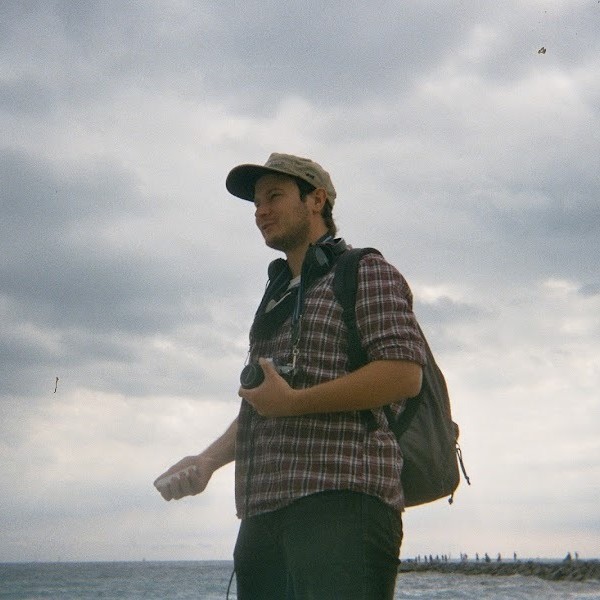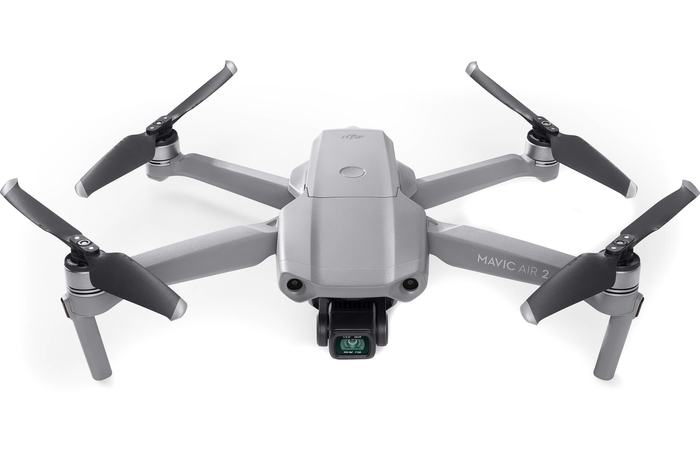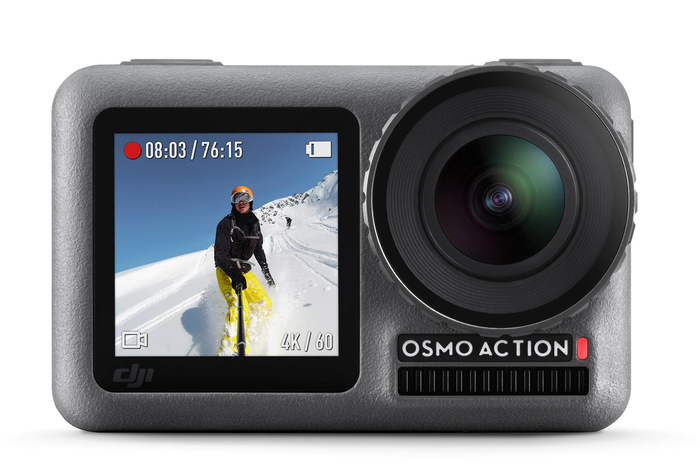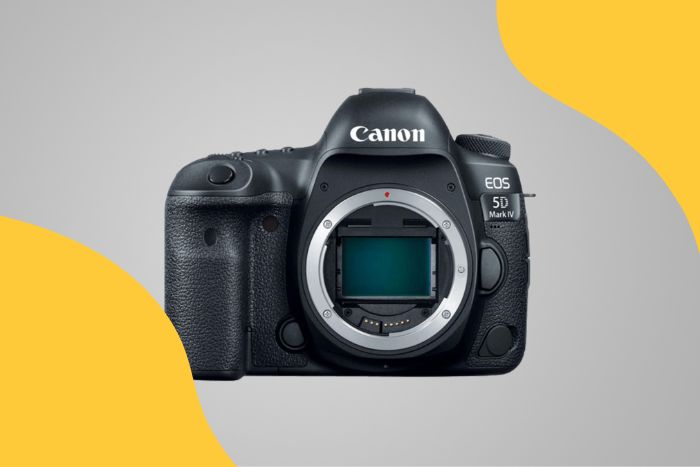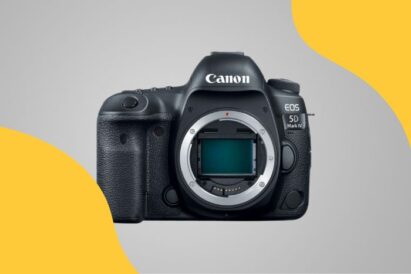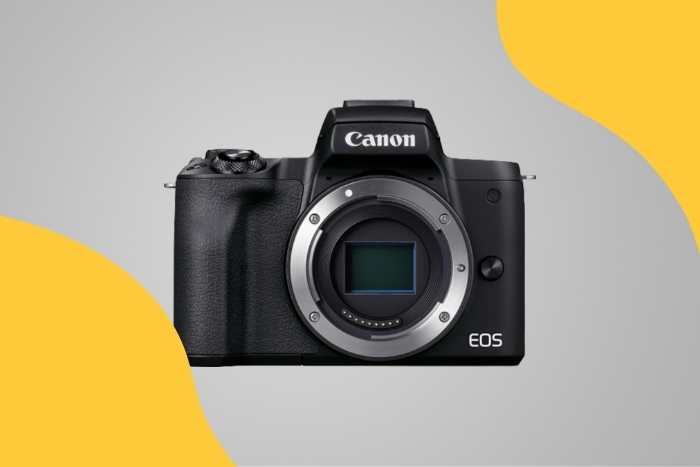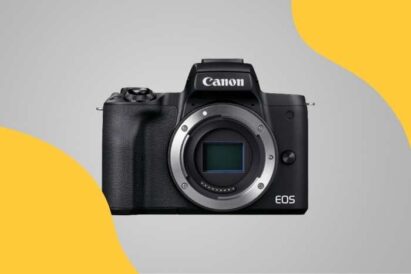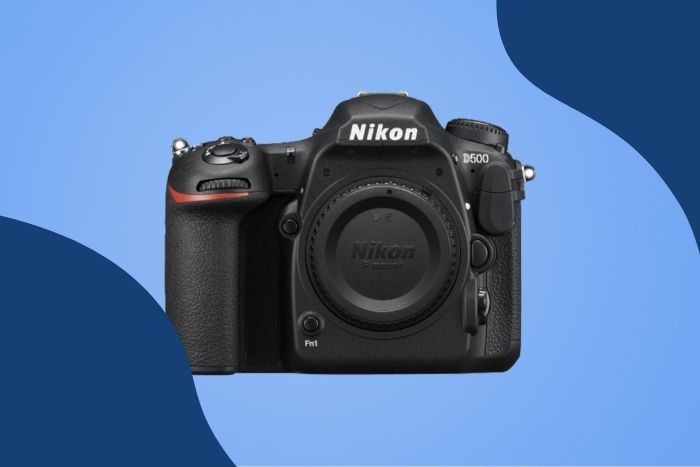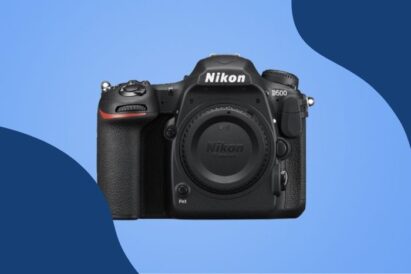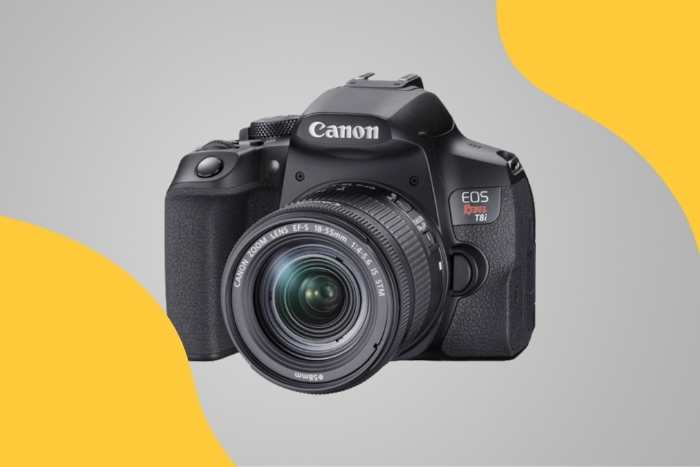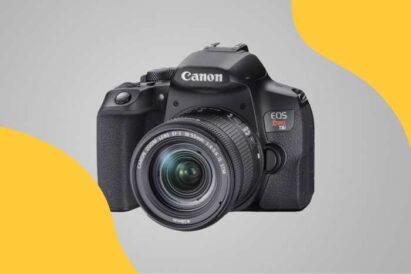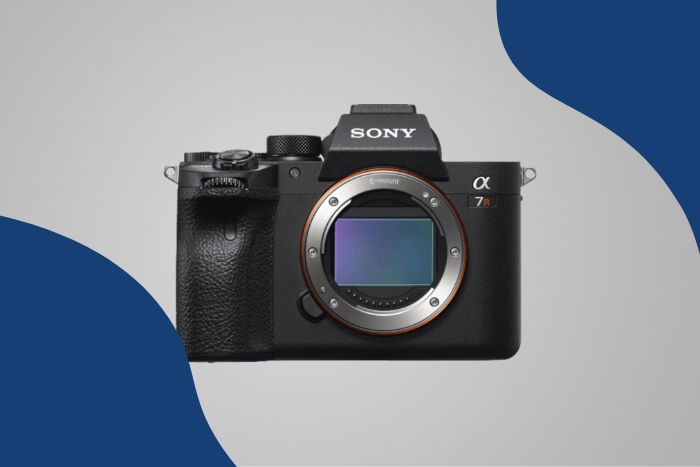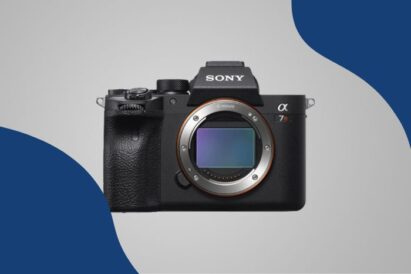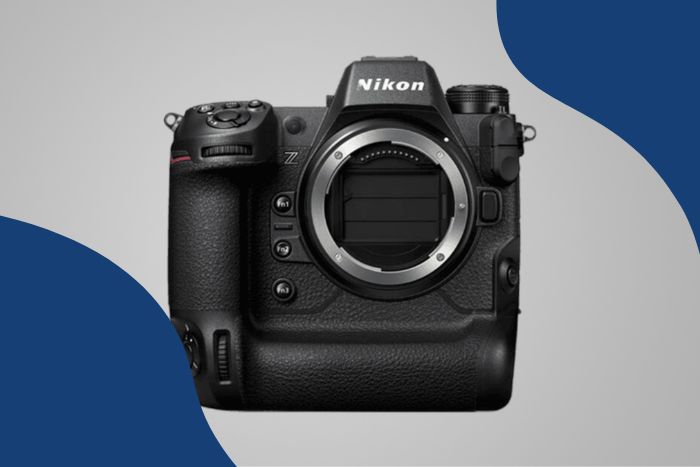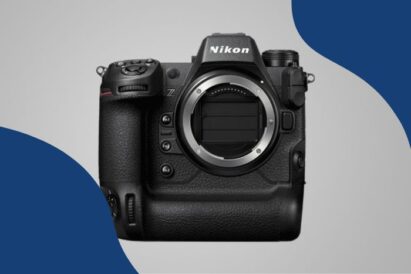Cars are more than just a mode of transport. They get us from A to B. But cars are beloved machines made with precision and artistry. From hatchbacks to sports cars, they all have their admirers. You have car publications, car shows, and motorsports. And car photography plays an essential role in every aspect of the motor industry.
The first step on the road is finding the best camera for car photography.
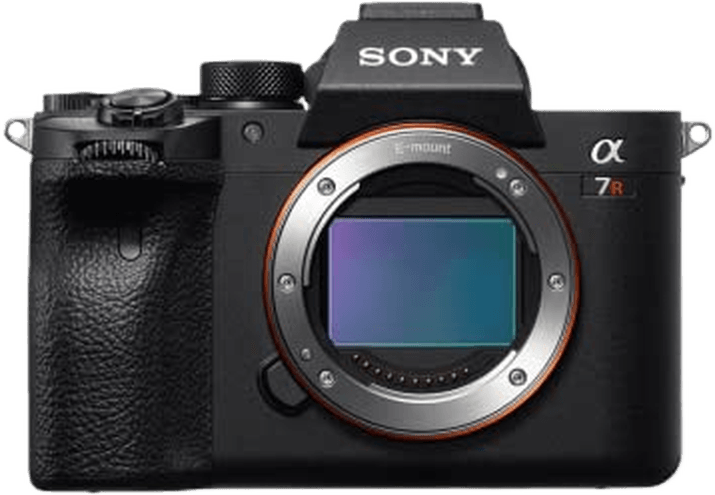
Sony a7R IV
We’ve tested the cameras, checked the specs, and spoken to industry insiders. Like all types of product photography, car photography has a unique set of demands. And we’ve made sure every camera on this list is up to the job of car photography.
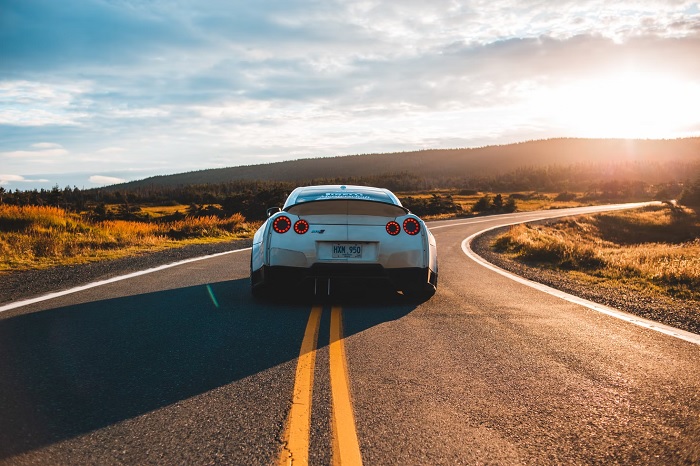
What is the Best Camera for Car Photography?
Car photography plays an integral role in the motor industry. You could be taking stylish shots for a big brand marketing campaign. Maybe you’re reviewing a car for a motor publication. Or perhaps you’re selling a second-hand car online. Whatever the occasion, getting car photography right is vital.
To find the best cameras for car photography, you need to know the demands of the discipline. There are different types of car photography. And you need to know the settings and features required for that specific kind of photography. They’ll guide you to the best camera for car photography.
Before we discuss each camera in detail, let’s have a look at the top 10:

- Amazing Image Resoltion
- 50 ISO Setting
- Autofocus has Face and Eye Detection
- 15 Stops of Dynamic Range
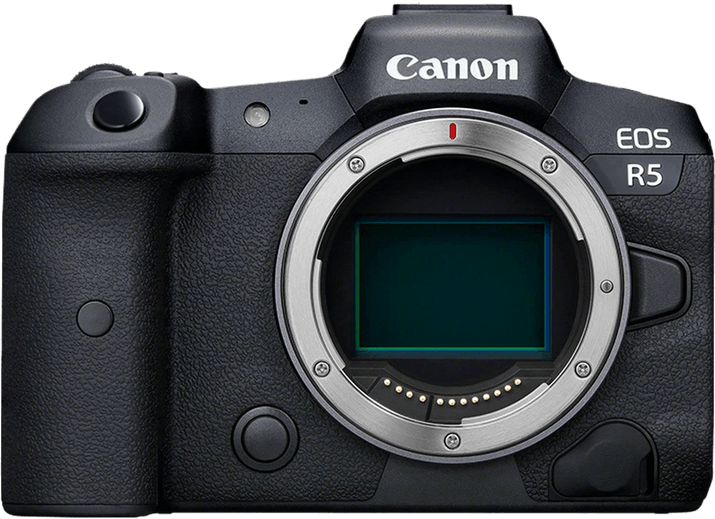
- Incredible 8K Ultra-HD Video
- 45MP Full-Frame Image Sensor
- Dual-Pixel AF Tracking
- In-Body Stabilization
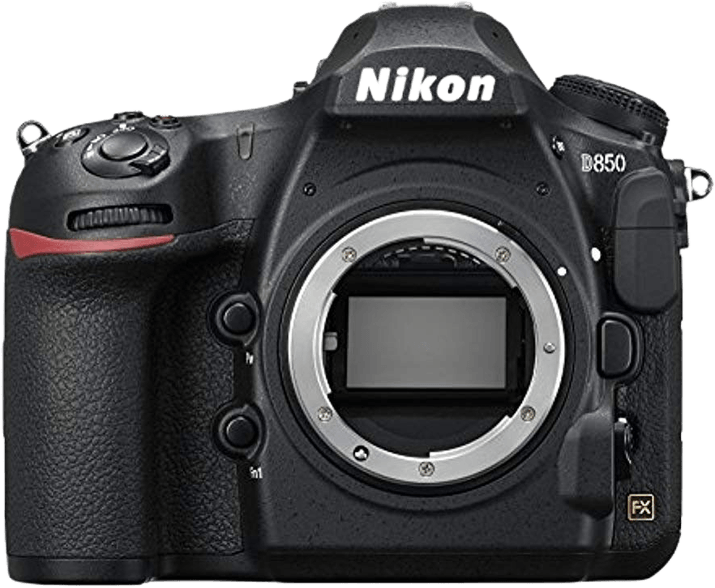
- 45.7MP Sensor with Superb Image Quality
- Wide ISO Range with Low of 64
- Long-Lasting Battery Life
- Excellent Tracking AF
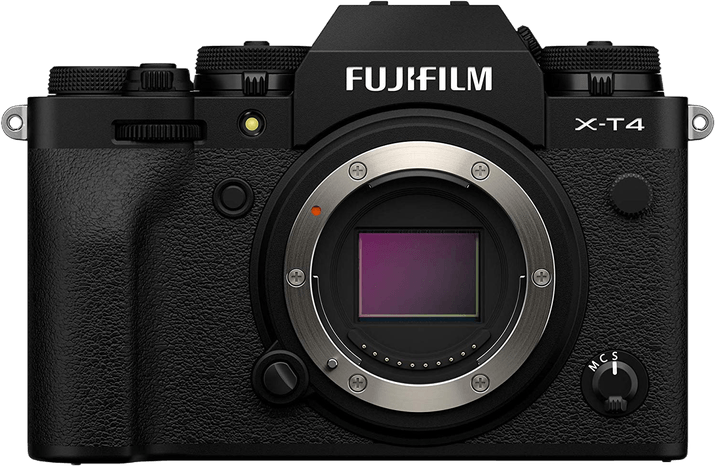
- High MP Count for APS-C Sensor
- Excellent 425-point Tracking AF System
- Fully-Articulating Touchscreen and Monitor
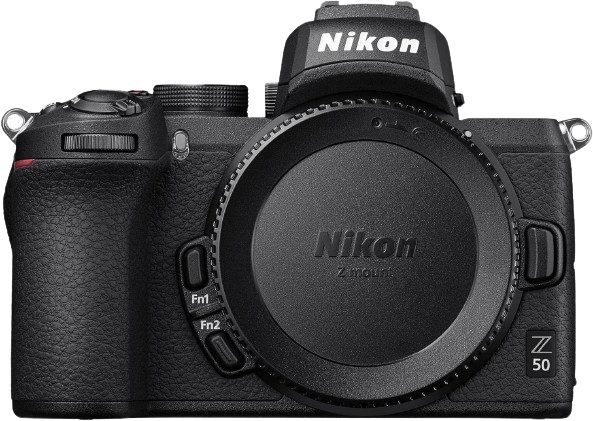
- Affordable Mirrorless Camera
- Compact Body
- 4K Video with Effect and Filters
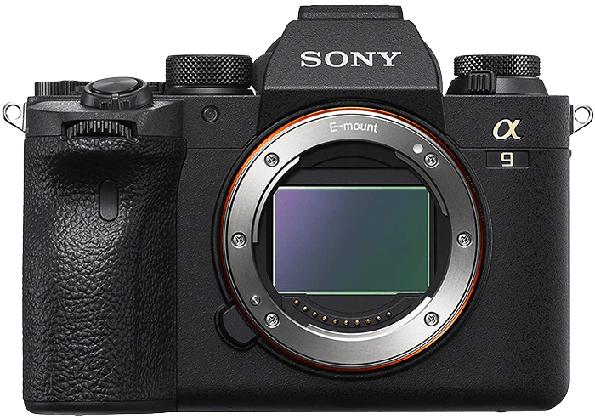
- Lightning-Fast and Responsive AF
- In-Body Stabilization
- 20fps Continuous shooting with high burst limits.
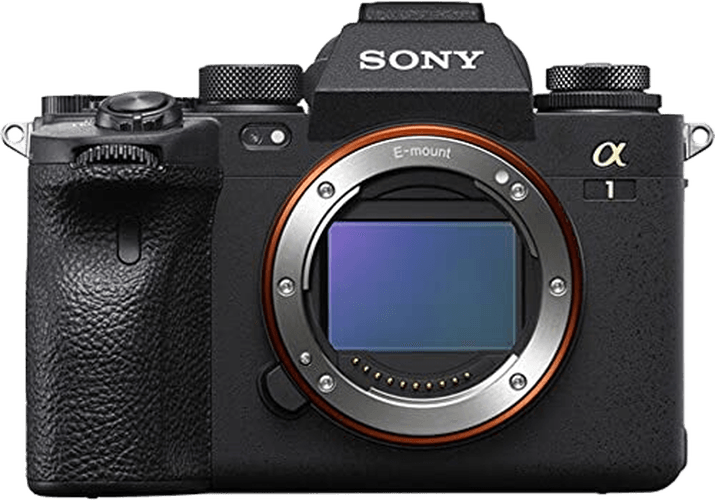
- 30fps Burst Mode
- 50.1MP Image Sensor
- Silent Shooting
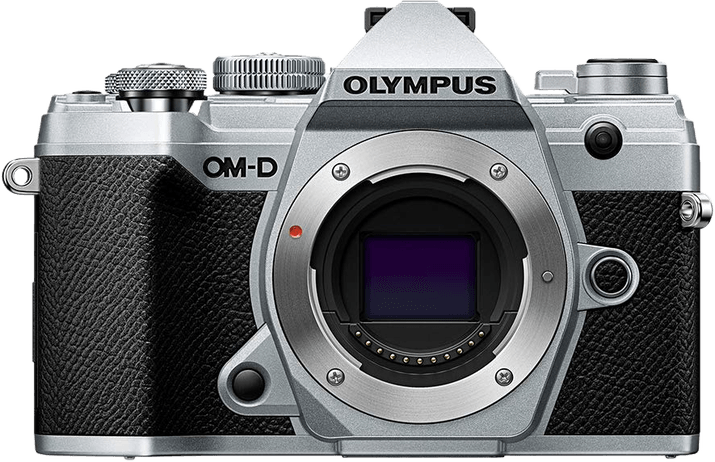
- 30fps Burst Rate
- 6.5 Stops of Image Stabilization
- Weather-Sealed
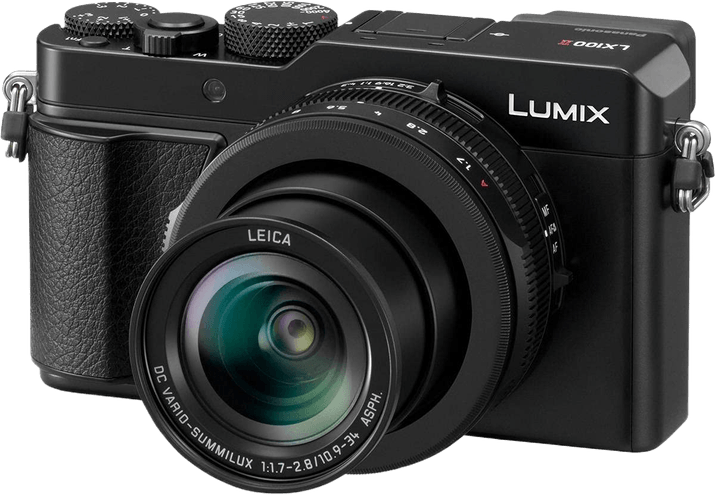
- 4K video at 30fps
- Good Quality Fixed Lens
- Macro Shooting Options
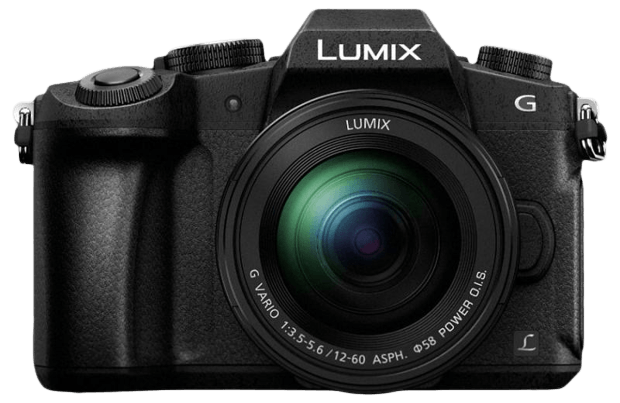
- No 30 Min. Limit on Video Shooting
- 5-Axis Image Stabilization
- Focus Stacking and Post Focus
13 Best Cameras for Car Photography
Once you know what functions and features you need, it’s time to find the best camera for car photography.
We’ve tested the cameras, read the reviews, and counted the scores. And with the help of photographers and car industry insiders, we’ve compiled our list of the best cameras for car photography.
1. Sony A7R IV

| Camera Type |
Camera Type
|
| Megapixels |
Megapixels
61.2 MP |
| Sensor Format |
Sensor Format
|
| Sensor Size |
Sensor Size
23.8 x 35.7 mm
|
| Frame Rate |
Frame Rate
10 fps |
| Autofocus Points |
Autofocus Points
425 |
- Super high-resolution sensor
- Stunningly sharp image quality
- Excellent face and eye detection AF
- Large, high-resolution EVF
- Sharp 4K Ultra HD video
- Weather sealing to protect from elements
- Long write times
- Poor AF at high frame rates
- No pixel-shift motion compensation
- Complicated menus
- Limited, laggy touchscreen functionality
The Sony A7R IV is a professional-grade, full-frame mirrorless camera. And when it comes to image quality, the Sony A7R IV is at the top of our list.
It’s equipped with a Sony back-illuminated Exmor R sensor, which has been a stand-out element in their A7R series. This full-frame sensor gives you an image resolution of 61MP. That’s some serious horsepower, even for a professional camera.
The ISO is another camera feature that makes this model ideal for high-level commercial car photography. The highest ISO level is 102400, which is handy for low-light situations. But it’s the 50 ISO setting that gives the camera special appeal. 50 ISO married with a 61MP sensor produces images of unparalleled quality.
You also have 15-stop dynamic range settings. It pulls the details from the darkest and brightest sections of your images. The autofocus system is excellent and has real-time tracking. And you have 5-axis stabilization for consistently sharp images.
While the Sony A7R IV is perfect for commercial car photography, some features aren’t up to the challenge of motorsports. The continuous shooting speed is limited to a sluggish 10 fps. And the video capabilities aren’t as impressive as the stills. The battery life can also leave you wanting, but shooting with that power uses a lot of energy.
2. Canon EOS R5

| Camera Type |
Camera Type
|
| Megapixels |
Megapixels
45 MP |
| Sensor Format |
Sensor Format
|
| Sensor Size |
Sensor Size
23.9 x 35.9 mm
|
| Frame Rate |
Frame Rate
20 fps |
| Autofocus Points |
Autofocus Points
1,053 |
- Large 45 MP sensor
- High frame rate of 20 fps
- In-Body Image Stabilization (IBIS)
- Body, face, eye, and animal tracking
- 8K/30p Ultra HD video
- Expensive
- Complicated autofocus setup
- Noise reduction applied to RAW files
- Hard to customize
- Overheats shooting video
The Canon EOS R5 is a full-frame mirrorless camera. It has fantastic image quality and plenty of outstanding camera features. But its video capabilities send this Canon camera to a strong number two position on our list.
Good video functions have become standard in top-level cameras. And while the 4k quality found in most rival cameras is perfectly acceptable, there wasn’t much to excite. But the Canon EOS R5 is a video revolution. It has 8K video resolution, which takes cinema-quality footage.
The full-frame sensor also gives you stunning results for still photography. The CMOS sensor has a resolution of 45MP. That’s stunning image quality, perfectly suited for professional automotive photography.
The autofocus system is ideal for car photography. It locks on quickly, and the phase-detection points cover 100% of the frame. That means it’ll track a speeding vehicle as it moves across your shot. And it works for photos and videos.
The mechanical shutter gives you a continuous shooting speed of 12 fps, which isn’t great. But switch to the electronic shutter, and you’ll get a burst speed of 20 fps. You’ll be able to capture cars traveling at high speeds without issue.
The 5-axis image stabilization system is also noteworthy for car photographers. It offers up to 8 stops of shake correction, preventing the slightest hint of camera shake. It’ll help while shooting by hand or using a tripod with a slow shutter speed.
3. Nikon D850

| Camera Type |
Camera Type
|
| Megapixels |
Megapixels
45.7 MP |
| Sensor Format |
Sensor Format
|
| Sensor Size |
Sensor Size
23.9 x 35.9 mm
|
| Frame Rate |
Frame Rate
7 fps |
| Autofocus Points |
Autofocus Points
153 |
- Fantastic overall image quality
- Excellent 3D continuous AF tracking
- Long, 1,840-shot battery life
- Durable, weather-sealed construction
- Sharp 4K/30p Ultra HD video
- No customizable shooting presets
- Slow autofocus in Live View
- Needs an expensive XQD card
- Rolling shutter noticeable in 4K video
- Slow 7 fps or 9 fps with an expensive battery grip
The Nikon D850 is the best DSLR camera for car photography. Mirrorless cameras are stealing a lot of the limelight, but the Nikon D850 still makes a case for DSLRs as professional cameras.
The image quality of the D850 is the major selling point. The full-frame sensor has a 45.7MP resolution with an outstanding dynamic range. The ISO is another fantastic feature, letting you shoot at 64 ISO. That gives you a high-quality image with incredible detail.
The autofocus is another strong point for the Nikon D850. It has 153 focus points that cover almost all of your frame. It’ll lock on quickly and track your subject as it moves. And the autofocus is accurate in low-light settings, giving you more opportunities for night shoots.
The video is 4K HD. Coming after the Canon EOS R5, that might not sound like much. But you can capture footage with the full ISO range and the tracking autofocus. And you can create 4K time-lapse videos for extra multimedia options.
The Nikon D850 has some weaknesses. And the burst speed is the main one. The 9 fps continuous shooting speed is slow by any standard. And, like many other DSLR cameras, it’s big and heavy. You’ll feel it during a long car photography shoot.
4. Fujifilm X-T4

| Camera Type |
Camera Type
|
| Megapixels |
Megapixels
26 MP |
| Sensor Format |
Sensor Format
|
| Sensor Size |
Sensor Size
23.5 x 15.6 mm
|
| Frame Rate |
Frame Rate
20 fps |
| Autofocus Points |
Autofocus Points
425 |
- Decent APS-C BSI-CMOS sensor
- A great frame rate of 15 fps
- 6.5 stops of image stabilization
- 4K video (DCI or Ultra HD) up to 60 fps
- A fully articulating rear touchscreen
- 12 Film Simulation modes
- Expensive for an APS-C camera
- Autofocus speed and accuracy depends on the lens and the subject
- Unreliable face and eye detection
- No external battery charger provided
- Limited video recording time
- No subject tracking in video mode
Full-frame cameras often steal the headlines. But a crop-sensor machine can still be the best camera for car photography if you’re looking for a smaller unit. And the Fujifilm X-T4 is the best camera for car photography in the crop-sensor division.
The Fujifilm X-T4 is a mirrorless camera with an APS-C sensor. Despite its smaller size, the sensor gives you an image resolution of 26.1MP. And with 5-axis image stabilization providing 6.5 stops of correction, you’re guaranteed fantastic car photographs.
If car videos are your thing, you’ll be pleased with the Fujifilm X-T4’s multimedia features. The video quality is solid 4K HD. And you can shoot super-slow-motion in full HD. The 425-point tracking autofocus has you covered for stills and video.
You have options with the burst mode. The mechanical shutter gives you a continuous shooting speed of 15 fps, which isn’t too shabby. But switch to the electronic shutter and you’ll have a rapid 30 fps. But burst mode seriously reduces the battery life. So you won’t miss a thing until the battery runs out.
The Fujifilm X-T4 is an excellent all-rounder. It gives you superb options for stills and videos. And the APS-C sensor means this digital camera is smaller and more affordable than some others.
5. Nikon Z50

| Camera Type |
Camera Type
|
| Megapixels |
Megapixels
21 MP |
| Sensor Format |
Sensor Format
|
| Sensor Size |
Sensor Size
23.5 x 15.7 mm
|
| Frame Rate |
Frame Rate
11 fps |
| Autofocus Points |
Autofocus Points
209 |
- A more affordable mirrorless option
- Nice to handle and use
- Relatively lightweight and not too bulky
- Solid 4K video performance
- 20.8 MP sensor resolution is lower than many close competitors
- Poor battery life
- Only one memory card slot
- Limited native APS-C lenses
The best car photography cameras don’t have to be professional-level equipment. After all, not everyone is a professional car photographer. And if you’re a beginner, you’ll need a camera to match your skill level. The Nikon Z50 is the best option for beginners.
The Nikon Z50 is a compact camera with a small and lightweight body. But it’s packed full of multimedia features that new car photographers will love.
The APS-C (crop) DX-format sensor has an image resolution of 20.9MP. That might not sound like a lot, but you’ll see a huge jump in quality from a smartphone camera. The ISO range is 100 to 51200, giving you noise-free images in low-light conditions.
The 4K video quality is excellent for car vloggers and videographers. You get video filters and effects, and you have the ability to shoot in slow motion for dramatic shots. And 11 fps burst speed isn’t bad for a camera at this level.
Vlogging and video recording are easy with the flip-down LCD touchscreen and viewfinder. And the WiFi and Bluetooth connectivity mean you can share your videos instantly.
6. Sony A9 II

| Camera Type |
Camera Type
|
| Megapixels |
Megapixels
24.2 MP |
| Sensor Format |
Sensor Format
|
| Sensor Size |
Sensor Size
23.8 x 35.6 mm
|
| Frame Rate |
Frame Rate
20 fps |
| Autofocus Points |
Autofocus Points
693 |
- Impressive 20 fps continuous shooting
- Lightning-fast autofocus
- Improved ergonomics
- Great file transferring speeds
- 5-axis in-body image stabilization to counter camera shake
- No in-camera RAW image processing
- Confusing menus
- Battery performance isn't great
- No S-Log video
- Subpar video quality compared to new full-frame cameras
The Sony A9 II isn’t cheap. But it does have the best autofocus system on the market. And that makes it one of the best cameras for car photography. This mirrorless camera is perfect for car racing and other motorsports.
The A9 II uses a 639-point phase-detection autofocus system. It uses artificial intelligence to constantly monitor the movement of your subject. It holds focus and tracks the subject as it moves. And it’s accurate even with fast-moving objects.
Artificial intelligence is also used for the AF eye-tracking feature. It locks on to eyes and tracks them, keeping them in focus. It’s so accurate it can identify and track the eyes of a racing driver wearing a helmet.
Sports photographers also love the 20 fps continuous shooting speed. It’s quick, and you also have full AF coverage when shooting at top speed. The burst limit for shooting is 361 shots for JPEG and 239 for RAW.
24.4MP from a full-frame sensor might not sound like much. But it’s a stacked Exmor-RS CMOS sensor, which features innovative sensor technology. You’re getting superb image quality. And while the Sony A9 II is geared toward capturing still photos, the video is still respectable.
7. Sony A1

| Camera Type |
Camera Type
|
| Megapixels |
Megapixels
50.1 MP |
| Sensor Format |
Sensor Format
|
| Sensor Size |
Sensor Size
24 x 35.9 mm
|
| Frame Rate |
Frame Rate
30 fps |
| Autofocus Points |
Autofocus Points
759 |
- Large sensor captures tons of detail
- High frame rate of 30 fps
- Eye tracking (human, animal, and bird)
- Easy customization
- Silent shooting for quiet situations
- Incredible 8K/30p Ultra HD video
- Expensive
- Highest frame rates only for JPEG, HEIF, and lossy compressed RAW files
- Eye tracking only selected manually
- Small rear LCD screen
- No GPS
The Sony A1 combines terrific image quality and speed. The specifications are outstanding. And many professional sports photographers rave about this camera. The quality, speed, and precision of the Sony A1 make it an ideal camera for car photography, especially for shooting high-speed motorsports. But this camera comes with a monster price tag.
It’s a full-frame mirrorless camera from Sony, so you’d expect a high megapixel count. But the image resolution of 50.1MP is still surprising. You’re guaranteed high-quality images with every click.
The burst speed is just what you need if you’re shooting high-speed car action. The electronic shutter gives you a sensational 30 fps. And that’s possible even when shooting in RAW. The phase-detection autofocus also gives you coverage while in burst mode.
The 5-axis image stabilization is also worth a mention for sports photographers. As is the excellent 4K video function. 4K sounds like a standard resolution for video, but it’s exceptional from the 50.1MP sensor.
Battery life is one problem. We recommend taking spares when you’re at your next car shoot. And the burst mode will drain the battery extra fast. It should also be noted that 30fps isn’t always achievable. You might need to settle for 25 or 20 fps at times.
8. Olympus OM-D E-M5 III

| Camera Type |
Camera Type
|
| Megapixels |
Megapixels
20 MP |
| Sensor Format |
Sensor Format
|
| Sensor Size |
Sensor Size
17.4 x 13 mm
|
| Frame Rate |
Frame Rate
30 fps |
| Autofocus Points |
Autofocus Points
121 |
- 50 MP High Res Shot mode
- 30 fps continuous shooting speed
- Up to 6.5 stops of in-body stabilization with certain lenses
- Excellent weather sealing
- Articulating screen for angled shots
- Excellent 4K Ultra HD and DCI video
- Only 10 fps with AF tracking
- Complicated Olympus menus
- No headphone out
- No video log profile for dynamic range or colors
- An average battery life
The Olympus OM-D E-M5 III is a micro four thirds (MFT) camera. It’s small, compact, and packed full of features that make it an excellent camera for car photography.
The micro four thirds camera sensor is smaller than a full-frame and APS-C sensor. That means MFT cameras are smaller, more compact, and lighter in your hand. Naturally, an MFT sensor will have a lower megapixel count. But the image quality is still outstanding.
The Olympus OM-D E-M5 III is ideal if you’re looking for something smaller for car photography. The 20MP Live CMOS sensor produces wonderful images. You won’t be disappointed if you’re shooting cars in a product photography style.
The features are also well-suited to faster types of car photography. The burst mode is one of the fastest of any camera, with a continuous shooting speed of 30 fps. That’s the same rate as the Sony A1, but the OM-D E-M5 III is a fraction of the price.
The autofocus is another feature speed fans will enjoy. It has a 121-point all-cross type phase-detection system. While it doesn’t have full-full coverage, it locks and tracks your subject when it’s in the covered area.
The 5-axis image stabilization also helps maintain image quality. It counteracts camera shake, giving you more freedom without a tripod. And it’ll keep fast-moving subjects looking sharp.
The Olympus OM-D E-M5 III is a compact and affordable camera for car photography. The quality is good enough for product photography. And its other features make it one of the best cameras for shooting cars on the move.
9. Panasonic Lumix LX100 II

| Camera Type |
Camera Type
|
| Megapixels |
Megapixels
17 MP |
| Sensor Format |
Sensor Format
|
| Sensor Size |
Sensor Size
17.3 x 13 mm
|
| Frame Rate |
Frame Rate
11 fps |
| Autofocus Points |
Autofocus Points
49 |
- High-performance 14-75 mm fixed Leica lens
- Macro shooting with 3 cm minimum focusing distance
- Good choice of aspect ratios
- USB charging
- Solid 4K video at 30 fps
- Large for a compact camera
- Focus stacking is only possible at 8 MP
- No articulating screen
- Narrow field of view in video mode
- Vulnerable to the elements with no environmental sealing
If you’re looking for something compact, the Panasonic Lumix LX100 II is one of the best cameras for car photography. It’s a point-and-shoot camera with all the right features for car photography.
The Panasonic Lumix LX100 II has a large four-thirds image sensor. At 21.7MP, it gives you stunning images from a small camera. And you even have image stabilization, keeping your photos crisp when shooting handheld.
The fixed Leica DC Vario-Summilux lens gives you macro and telephoto options. The macro options are ideal for capturing the intricate details of a car. You can document all the tiniest car features with stunning quality.
You also have telephoto shooting options. And you don’t have to worry about changing lenses. The telephoto capabilities make it a suitable camera for car events where you can’t get close to the vehicles.
The 4K video is brilliant for a camera of this size. It shoots at a rate of 30 fps with full image quality. And the frames can be extracted and used as still photographs.
There’s no optical viewfinder, but the digital display gives you a clear view of what you’re shooting. Plus, it doubles as a touchscreen for easy control and navigation. The battery life is another strong point. It’s yet another feature, making it the best pocket-sized camera for car photography.
10. Panasonic Lumix G85

| Camera Type |
Camera Type
|
| Megapixels |
Megapixels
16 MP |
| Sensor Format |
Sensor Format
|
| Sensor Size |
Sensor Size
13 x 17.3 mm
|
| Frame Rate |
Frame Rate
9 fps |
| Autofocus Points |
Autofocus Points
49 |
- Excellent video without 30-minute limit
- Articulating touchscreen and viewfinder
- Rugged and durable body
- 5-axis image stabilization
- In-camera focus stacking and post focus
- Low resolution for stills
- Outdated autofocus system
- Autofocus is limited to 6 fps
- Short battery life
- Poor viewfinder for low-light shooting
If you’re getting started on the video side of car photography, you might not have the budget for something like the Canon EOS R5 straight away. The Panasonic Lumix G85 is an excellent budget-friendly alternative for car photography.
The micro four-thirds sensor gives you a resolution of 16MP. It’s far from record-braking in terms of resolution. But the G85 has an optical low-pass filter, giving your images a 10% boost in detail and clarity.
The Panasonic is geared towards video recording. And the 4K footage is excellent for enthusiastic vloggers and videographers. The dual image stabilization helps keep your footage steady when shooting handheld. It’ll help in low-light situations too.
Video is shot at 30 fps, and you can pull individual frames from the footage for stills. It’s a handy feature for commercial videography because you don’t have to re-do shoots for stills. Even a 4K Post Focus allows you to change the focus point after taking the picture.
If you’re a videographer on a budget, the Panasonic Lumix is one of the best cameras for car photography. While the photos aren’t groundbreaking, the video features prove their high quality.
11. Nikon D5600
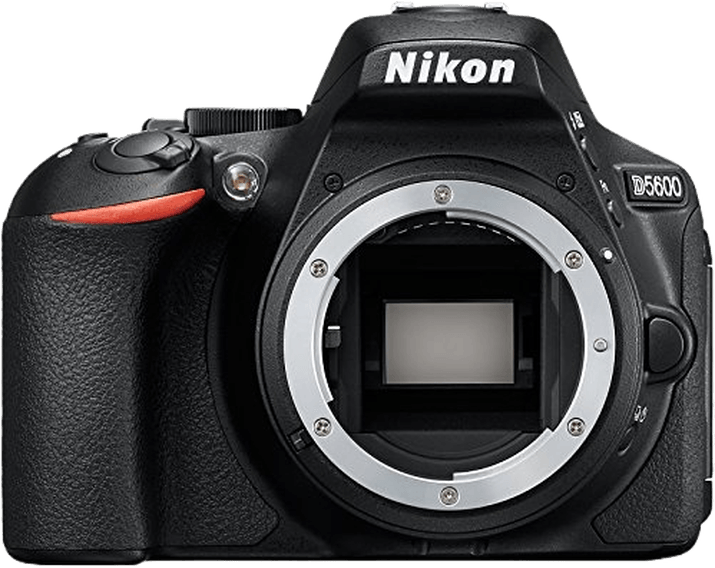
| Camera Type |
Camera Type
|
| Megapixels |
Megapixels
24.2 MP |
| Sensor Format |
Sensor Format
|
| Sensor Size |
Sensor Size
15.6 x 23.5 mm
|
| Frame Rate |
Frame Rate
5 fps |
| Autofocus Points |
Autofocus Points
39 |
- High quality images for crop sensor
- Great ISO sensitivity
- Fast 39-point AF system
- Not too bulky and nice to handle
- Autofocus isn't great in video mode
- No dual memory card slots
- No USB charging
- No Nikon Fine-Tune function to adjust AF for specific lenses
The Nikon D5600 has been on the market for some time now. But despite its age, the D5600 remains one of the best cameras for car photography. It’s also the best budget camera if you’re looking for a reliable DSLR.
This camera does have its limitations. The burst is slow, and the video recording specs look a little outdated. But image quality isn’t something you need to worry about with this Nikon camera.
The APS-C camera gives you an image resolution of 24.2MP. And this is backed up by excellent low-light performance. The ISO range is 100 to 25600. And you won’t experience any digital noise until you reach the upper limits.
The burst mode is slow by anyone’s standards, giving you just 5 fps. The video is full HD and highly usable. But the standard has fallen behind newer camera models. You get autofocus with 39 points of detection and tracking. But it’s not very reliable with fast-moving subjects.
These specs tell us the Nikon D5600 isn’t the best camera for motorsport or car racing photography. But the image quality and low-light performance show it can hold its own with commercial and automotive photography.
12. GoPro Hero 10
Best Action Camera for Car Photos
The GoPro Hero 10 is the best action camera for car photography. Action cameras aren’t typically suited to product photography or traditional sports photography. But they offer a different kind of car photography.
You can attach a GoPro to a helmet, surface, or person. Use the GoPro Hero 10 for in-car footage during test drives and races. Stick it to the dashboard for exciting race videos. Or put it on drivers’ helmets to see their point of view while they speed around the track.
The GoPro Hero 10 gives you photo and video options. Its image sensor has a resolution of 23MP, which is impressive for a small camera. And the video is 5.3K and shoots at 60 fps. This frame rate gives you incredibly smooth footage. And if the road gets bumpy, the HyperSmooth 4.0 image stabilizer keeps everything looking smooth.
Moving and sharing photos and videos is super simple. You can connect to the GoPro directly using your phone and the Quik app. You can pick media from the camera, send it to another device, or share it on social media. Or you can also use the USB connection.
The GoPro Hero 10 is a niche option. But if you want fantastic action videos, the GoPro Hero 10 is one of the best cameras for car photography.
13. DJI Mavic Air 2
Best Drone for Car Photography
The DJI Mavic Air 2 is another alternative pick for the best camera for car photography. It’s a drone camera for aerial photography. So you can capture shots for race events from above. Or you can record footage of a car driving along a mountain road.
The image sensor is only a half-inch. But the stills and video are of excellent quality. Photos have a resolution of 48MP, which provides exceptional quality. And the video is 4K at 60 fps.
You also have extra multimedia features to boost your car photography. There are panoramas, enhanced HDR photos, and 8K hyperlapse footage.
The battery life is also excellent. You get 34 minutes of uninterrupted flight time. While 34 minutes might not seem like much, it’s an eternity compared to other drone cameras. The controls are easy to master too. And once you get it in flying, it’s easy to capture stills and footage from above.
Our Verdict
The best camera for car photography needs to match specific criteria. Some of these will be personal, like budget and size. At the same time, others will be determined by the type of car photography you want to pursue.
Commercial car photography requires outstanding photo quality. And you might need excellent video footage too. If you’re shooting moving cars and motorsports, you’ll need a camera that’s up to the challenge of fast-paced photography.

Sony a7R IV
Our list includes the best cameras for car photography, no matter your interests. We have top-level cameras for professional car photographers. And you can go for a mirrorless or DSLR camera.
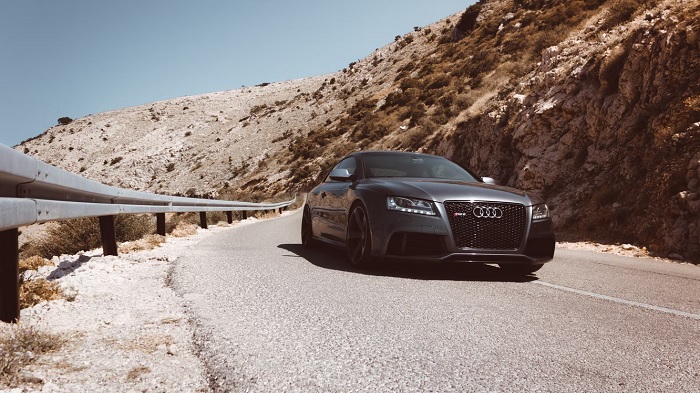
Camera Buying Guide
The Best Camera Features for Car Photography
Image resolution is always a headline feature when buying new cameras. And having excellent image quality is one of your main priorities as a car photographer.
If you’re shooting cars for commercial purposes, you need to show the car in all its glory. It doesn’t matter if it’s a million-dollar commercial or a personal ad in Auto Trader—the car should look its best.
A fast burst mode is also something to look for in a camera for car photography. Most shoots involve the car being in motion. And the best way to capture the vehicle moving at speed is with burst mode. It’s also a vital feature when documenting motor racing events.
You’ll need a fast shutter speed too. Cars move quickly, especially when they’re racing. A fast shutter will keep the race cars looking sharp, so they don’t look like one big blur when darting around the track.
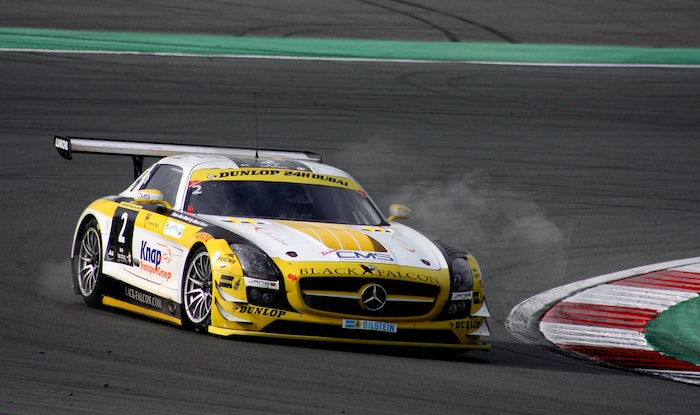
It would be best to look for a camera with a good ISO range. While you’ll want to keep the ISO as low as possible to maintain quality, there will be times when light levels are low. You might have to shoot in a dark garage or at a nighttime race.
An advanced autofocus (AF) system is a must for car photography. It would help if you had an autofocus that locks onto and tracks a moving car. And it might be moving quickly, so the AF needs to keep the vehicle focused. Image stabilization is another feature that can help keep the car looking sharp.
Professional photographers are expected to shoot stills and videos. So a camera with good video specs means you don’t have to switch between cameras. You can take quality photos and videos with the same machine.
The Best Lenses for Car Photography
The best lens depends on the kind of car photography you’re shooting.
A prime lens will work well if you’re shooting a car in the style of product photography. There’s no need for a zoom lens or extra magnification if the vehicle is stationary. And prime lenses have wider aperture ranges, which helps keep the ISO lower.
You’ll need a zoom lens if you’re shooting the car in motion. They give you more options, and you don’t have to change lenses between shots. Wide-angle zoom is the most popular for commercial car photography.
A telephoto lens is the best option for racing events. A telephoto is your best option to keep tabs on the cars as they race around the track. They have excellent magnification to get close to the action without leaving the stands.
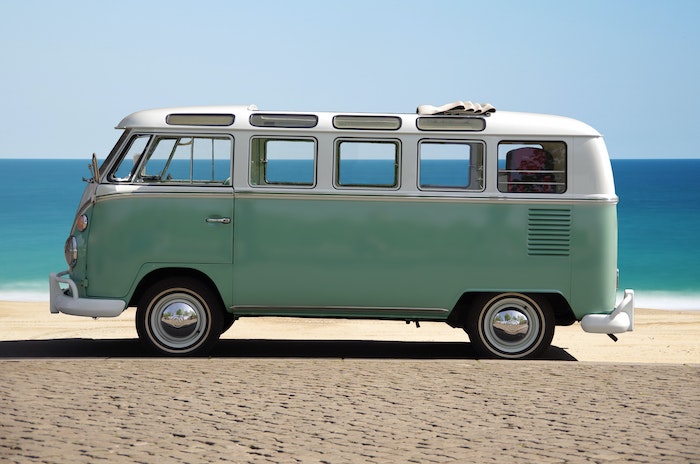
Shiny new cars look fantastic. But it can be tricky to get good photographs when they’re in pristine condition. Any lighting you use bounces right off, giving you glare and camera flare.
You also have reflections you need to avoid in your shots. Seeing yourself reflected in the car bonnet will ruin your photographs. You need to get creative with shooting angles and lighting positions.
You want to keep your ISO low to maintain high-quality images. For stationary shots, you can use a slow shutter speed to compensate. But when the car’s in motion, you need a fast shutter speed. You have to widen your aperture to balance the exposure.
Different kinds of vehicles appeal to a variety of people. So use the car’s appeal to influence the car photographs you take. The vehicle in question should represent a way of life for the target audience. And adapt your photography to match the ambitions of your audience.

